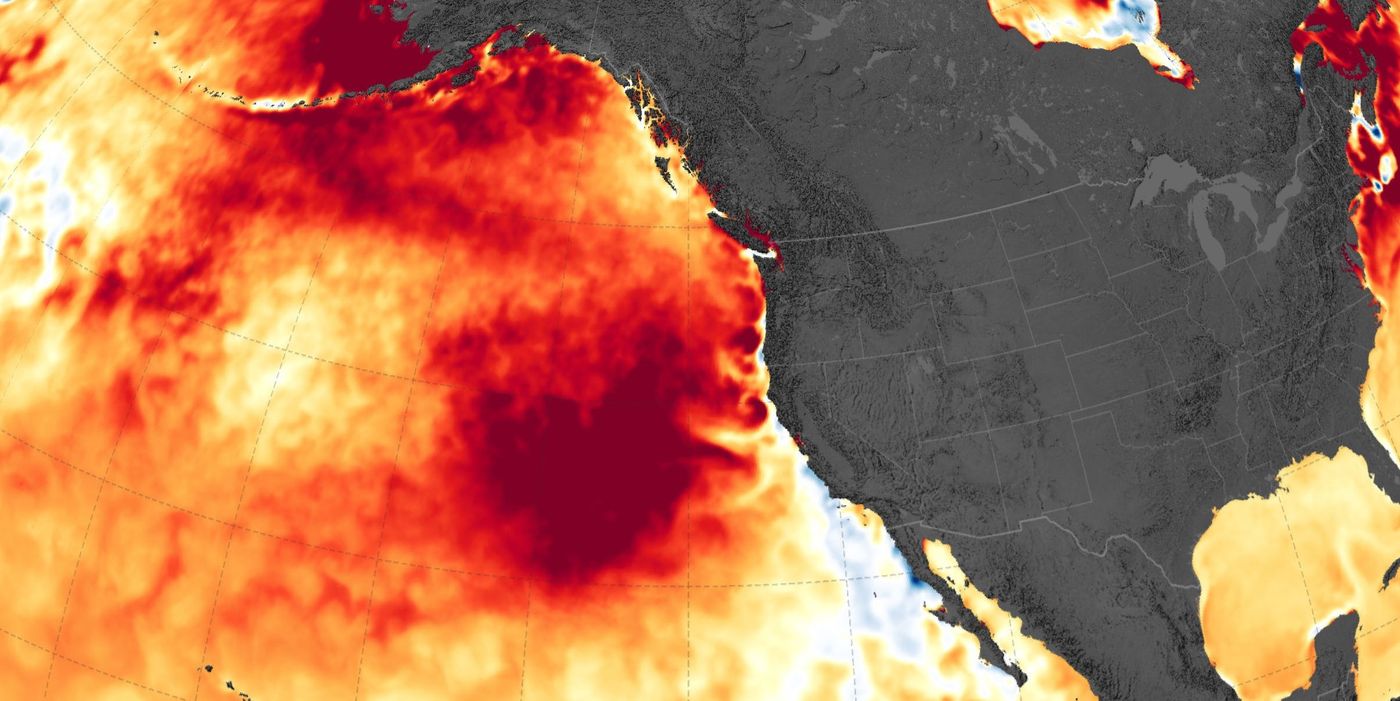Oceans Experience Heatwaves Too
With climate change affecting our air temperatures, we also see an impact on our world’s oceans. Marine heatwaves (MHW) and marine cold spells are seasonal abnormalities that can happen with unexpected extremes in ocean temperatures.
Photo courtesy of Joshua Stevens at NASA’s Earth Observatory
In a recent publication from the Annual Review of Marine Science, a team of global scientists published a summary of current definitions, methods, conclusions, and questions regarding MHWs.
Like the heatwaves on land we are all familiar with, marine heatwaves are abnormal seasonal increases of temperatures in a specific location. In this case, the abnormal increase in temperature is located on the ocean and can wreak havoc on marine ecosystems. These disruptions to marine ecosystems can cause many problems for humans that live and work near them, altering weather patterns, contributing to storms, bleaching coral, and impacting commercial fisheries. MHWs, in particular, are becoming more and more frequent and intense as climate change heats the earth.
Variables involved in studying MHWs include wind speed, wind direction, cloud cover, humidity, and vertical mixing. While sea surface temperature has long been studied in oceanography and is an integral part of learning about MHWs, depending on the thickness of the mixed layer that floats on the ocean, MHWs can extend deep below the water’s surface.
Monitoring MHWs in real-time has become more feasible with advances in global satellite sensing and ocean modeling technology. The study of marine heatwaves is rapidly growing as better datasets and technology become available. However, there have been some long-term studies of recent MHWs that suggest some concerning trends.
Examples of recent MHWs that have occurred due to warmer than usual air temperatures include the summers of 2003 and 2006 in the Mediterranean Sea, the summer of 2012 off the northeast United States, 2015–2016 from the Indian Ocean to the Coral Sea, 2016 in the East China Sea, 2017 along the southwest Atlantic shelf, 2017 off coastal Peru, and 2017-2018 in the Tasman Sea.
While research is ongoing, and there are still many questions, some models show that most of our oceans may be in a permanent MHW by 2100.
Sources:
Annual Review of Marine Science
CIRES at Colorado State University









